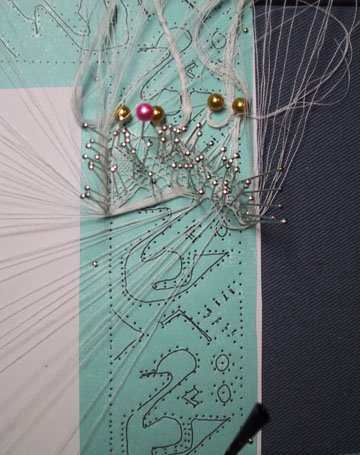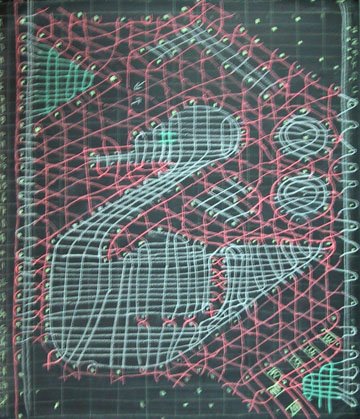There are a number of ways to learn about making bobbin lace. The initial steps are not terribly difficult, but they require a few specialty items, and some patience. Here are some resources for a newbie to check into:
Lacemaking instructional booksThere are quite a few books on the market about lacemaking. Many are in print, and are available from lacemaking suppliers, or even on places like amazon.com. Out of print ones appear occasionally on eBay, or show up in used bookstores (try places like abebooks.com).
Lacemaking suppliers
Suppliers are plentiful in some places such as England, but they are rarities in other countries. The US has a number of suppliers, as does Australia, Holland, and Belgium. Try doing a Google search on lacemaking supplies or lacemaking bobbins, and you may find some. Some appear as links off of the pages that are listed as resources on this blog.
Lacemaking videos
Some videos and DVDs have been produced. These are often available from lacemaking vendors. There are some videos on YouTube that are certainly worth a look. In addition, Jo Edkins has compiled an impressive online Bobbin Lace school.
WorkshopsWorkshops are offered in various countries. It is not uncommon to find a lace teacher from Europe teaching in the US, or vice versa. To find out about lace workshops being offered, check into sites of lacemaking instructors, lacemaking magazines, or lacemaking guilds.
Lacemaking guildsGuilds often have various activities going on, some of which may include some form of instruction. This is also the most probable place to find someone who is offering a weekly lacemaking class.
Saturday, April 30, 2005
Saturday, April 23, 2005
Bobbin lace - what is it?
Bobbin lace is an art that dates back to the mid 1500s (there is debate as to the actual starting date and location). It is thought to have started in Europe as a mechanism for creating fine lace without needing a weaver. You see, bobbin lace is woven. Unlike tatting, which is knotted. Or knitted or crocheted laces that are looped. Before this technique was developed, weavers wove fabrics, and needleworkers used various methods to create decorative holes in the fabric.
This photo shows bobbin lace in progress. It is made on a lacemaking pillow, which is stiff enough to hold the pins securely. The threads are wound onto bobbins, which are then used to manipulate the threads. The pricking is the pattern, which indicates where to put the pins. The pins are inserted after one or more stitches are made using the bobbins. As the work progresses forward, the pins are left in the most recent inch or so of the lace to prevent the tensioning process from pulling the stitches out.
This photo shows bobbin lace in progress. It is made on a lacemaking pillow, which is stiff enough to hold the pins securely. The threads are wound onto bobbins, which are then used to manipulate the threads. The pricking is the pattern, which indicates where to put the pins. The pins are inserted after one or more stitches are made using the bobbins. As the work progresses forward, the pins are left in the most recent inch or so of the lace to prevent the tensioning process from pulling the stitches out.
Subscribe to:
Posts (Atom)



